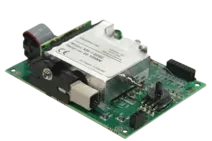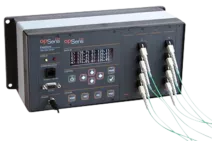Fiber optic pressure sensors monitor ground conditions


High-precision measurements in interference-prone, demanding applications
The WLPI fiber optic measurement solutions enable precise measurements in particularly demanding applications. They are available for measuring strain, pressure, displacement and temperature. We also offer a selection of special sensors that are already in use by customers. Matching signal evaluation units and OEM boards round off the WLPI Messtechnik range.



Examples of fiber optic measurement solutions that use the WLPI principle include
These examples illustrate the versatile applications of fiber optic measurement instrumentation that use the WLPI principle to monitor and measure various physical parameters in different industries and applications.
We have the right fibre optic sensor for every application. We are happy to support you in your selection. At Althen, we draw on more than 45 years of experience to offer you the optimum solution, tailored to your requirements. This also includes customised fibre optic sensors as a complete package. The advantage for you is that we are not tied to one manufacturer and can advise you independently. On request, we can customise the measuring system exactly to your needs. Do you have any questions? We are here to help you!



We offer standard fiber optic instrumentation but can also help you with a customized design or a complete measurement solution.
WLPI stands for "White Light Polarisation Interferometry". It is a type of fibre optic sensor that is frequently used in measurement and sensor technology to carry out very precise measurements of surface profiles and properties.
WLPI fiber optic sensors use the properties of optical fiber to measure physical variables such as temperature, strain, pressure or acceleration. These sensors are based on the principle of interference of light waves and work with an optical fibre cable consisting of a core and a surrounding sheath.The core material of the fiber cable has a certain refractive index, which changes when the cable is subjected to an external influence such as strain or pressure. This change in the refractive index leads to a change in the propagation speed of the light in the core, which in turn leads to a change in the phase position or wavelength of the light.
The WLPI sensor measures this change in the wavelength of the light in order to draw conclusions about the physical quantity acting on the fibre cable. To do this, a light signal is sent through the fibre cable and reflected at a reflective end of the cable. The reflected light is then compared interferometrically with the transmitted light in order to determine the change in wavelength. This change is then converted into the corresponding physical quantity and output.
By using fiber optic sensors, physical quantities can be measured in environments where conventional sensors cannot be used due to electromagnetic interference or high temperatures. They are used in various areas such as industrial automation, structural monitoring of buildings and medical diagnostics.
WLPI fiber optic sensors offer a number of advantages, including high sensitivity, fast measurements and non-invasive characteristics. They find applications in areas such as surface inspection, microstructuring, semiconductor manufacturing and medical imaging.